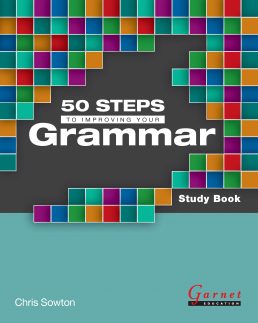
Leo Gomez, Toronto-area teacher and the man behind Learn Your English, is a big fan of 50 Steps to Improving Your Grammar. He shared this review with us recently:
What do I like about it? It breaks the language down into well-explained language while testing students’ prior knowledge of the TL in each step. It is attractive to look at and the whole structure of the book is very straightforward: a problem-and-solution kind of approach. I love the guided discovery aspect of it and I truly believe that a lot of ESL teachers would benefit from using a book like this.
Even better, Leo was kind enough to share an example with us of how he uses the book in class.
The way I’ve used it was through a Test-Teach-Test approach. It worked really well.
The framework I used was:
- Write the quote [each unit begins with a short quote] on the board and ask students if they can guess what it means and what the focus of the lesson will be on.
“Through the You, a person becomes I” –> Focus here is on pronouns and how they work.
- (Reflection) Test: I adapt this part sometimes to make it more challenging. For the pronoun chapter (Step 7), I dictated all the sentences and had the students underline all the pronouns and understand how they are used. Once that was finished, I asked them to write a one-sentence definition of their function.
- (Contextualization): Here we expand a bit on the testing aspect. This can be done by raising awareness of the TL. In the pronoun lessons, for instance, students categorized the pronouns and had to write down what they had in common.
- (Explanation): For the explanation part, the approach can be twofold: 1) It could be a teacher lecture (which I dread doing), or 2) I would give each group of students parts of the explanation. They study and then explain it to each other – I’m usually hovering around to field any questions that arise or clear any confusion.
- (Activation): This is the controlled practice or Testing (the last T). Students work individually and we work together on the answers. What usually follows is a semi-controlled practice, where students create their own exercises to test other students. The last stage is usually a speaking activity where they have to use the TL. In the case of pronouns, I asked students to describe an event that is famous in their city or a famous person (non-scripted).
Thanks to Leo for sharing this with us!

